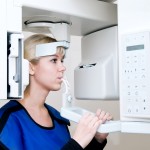
While Computed Tomography (CT) is a well-established diagnostic tool in many areas of medicine it is only since the development of Cone Beam Computed Tomography (CBCT) that is use in dentistry is beginning to be explored. 2012 saw the publication of new European evidence-based guidelines on CBCT for dental and maxillofacial radiology as a result of the SEDENTEXCT project. The aim of this new review was to determine the diagnostic accuracy of cone-beam computed tomography (CBCT) for tooth fractures in vivo.
The PubMed, Embase, Web of Science, ProQuest Dissertations & Theses, CNKI (China National Knowledge Infrastructure) and SIGLE databases were searched with no language restrictions. Study selection and data abstractions was conducted independently by two reviewers . Quality of the studies was evaluated using Quality Assessment of Diagnostic Accuracy Studies-2 (QUADAS-2). Study outcomes were sensitivity, specificity, positive likelihood ratio (LR), negative LR and summary receiver operating characteristic (SROC).
- 12 studies were included
- Values for the pooled outcomes were:-
- Sensitivity, 0.92 (95% CI=0.89-0.94),
- Specificity, 0.85 (95% CI=0.75-0.92),
- Positive likelihood ratio, 5.68 (95% CI=3.42-9.45),
- Negative likelihood ratio 0.13 (95% CI=0.09-0.18)
- Summary receiver operating characteristic 0.94 (95% CI=0.90-0.98)
- The pooled prevalence of tooth fractures in patients with clinically-suspected but periapical-radiography-undetected tooth fractures was 91% (95% CI=83%-97%).
- Positive and negative predictive values were 0.98 and 0.43 (subgroup analysis: 0.98 and 0.28 for endodontically-treated teeth; 0.99 and 0.77 for non-endodontically-treated teeth).
The Authors concluded
We suggest that CBCT has a high diagnostic accuracy for tooth fractures and could be used in clinical settings. We can be very confident with positive test results but should be very cautious with negative test results. For patients with negative results, close follow-ups are recommended.
Comment
The authors discuss the quality of the QUADAS-2 assessment of the studies pointing out that the risk of bias in the included studies is was medium to high with applicability (to real clinical situations) being assessed as medium to low risk. In terms of clinical application the authors suggest that CBCT should be reserved for those teeth with clinical symptoms of tooth fractures with negative findings on periapical radiographs and restricted to adults. This is similar to the European guideline recommendation, which states:-
Limited volume, high resolution CBCT is indicated in the assessment of dental trauma (suspected root fracture) in selected cases, where conventional intraoral radiographs provide inadequate information for treatment planning
Links
Long H, Zhou Y, Ye N, Liao L, Jian F, Wang Y, Lai W. Diagnostic accuracy of CBCT for tooth fractures: a meta-analysis. J Dent. 2013 Dec 6. pii: S0300-5712(13)00324-2. doi: 10.1016/j.jdent.2013.11.024. [Epub ahead of print] PubMed PMID: 24321294.

[…] Dental Elf – 19th Dec 2013 – Review suggests that Cone Beam Computed Tomography may have rol… […]